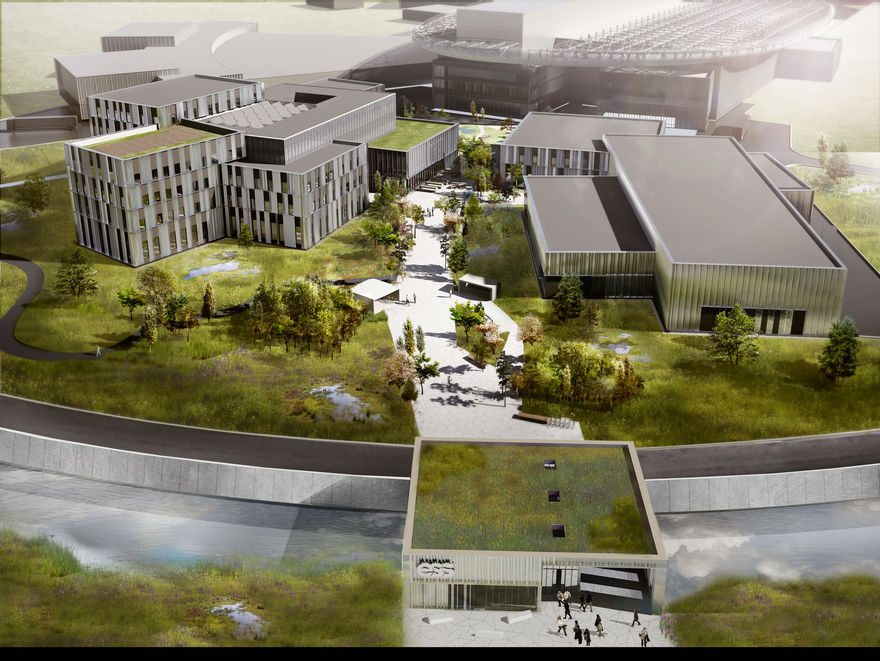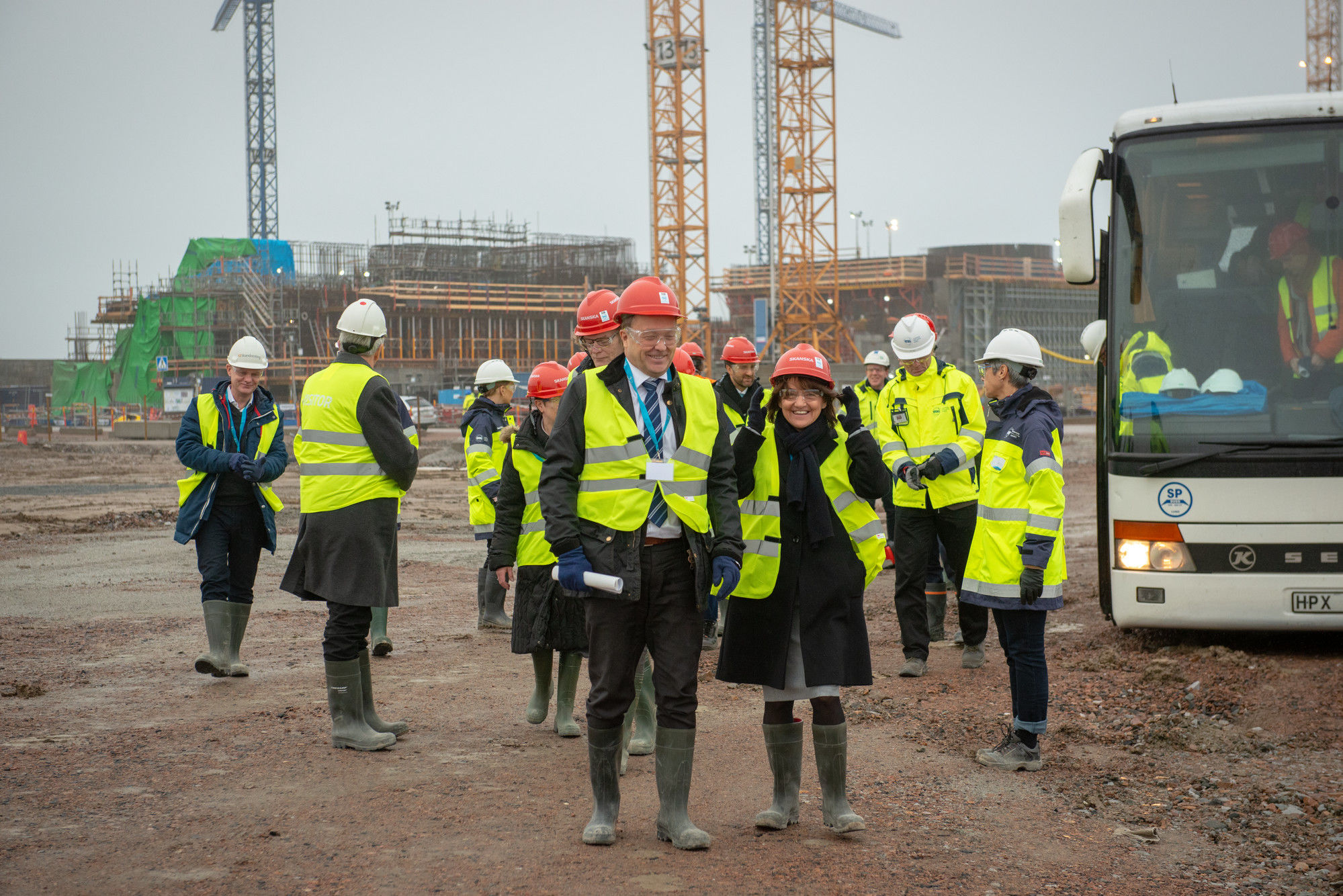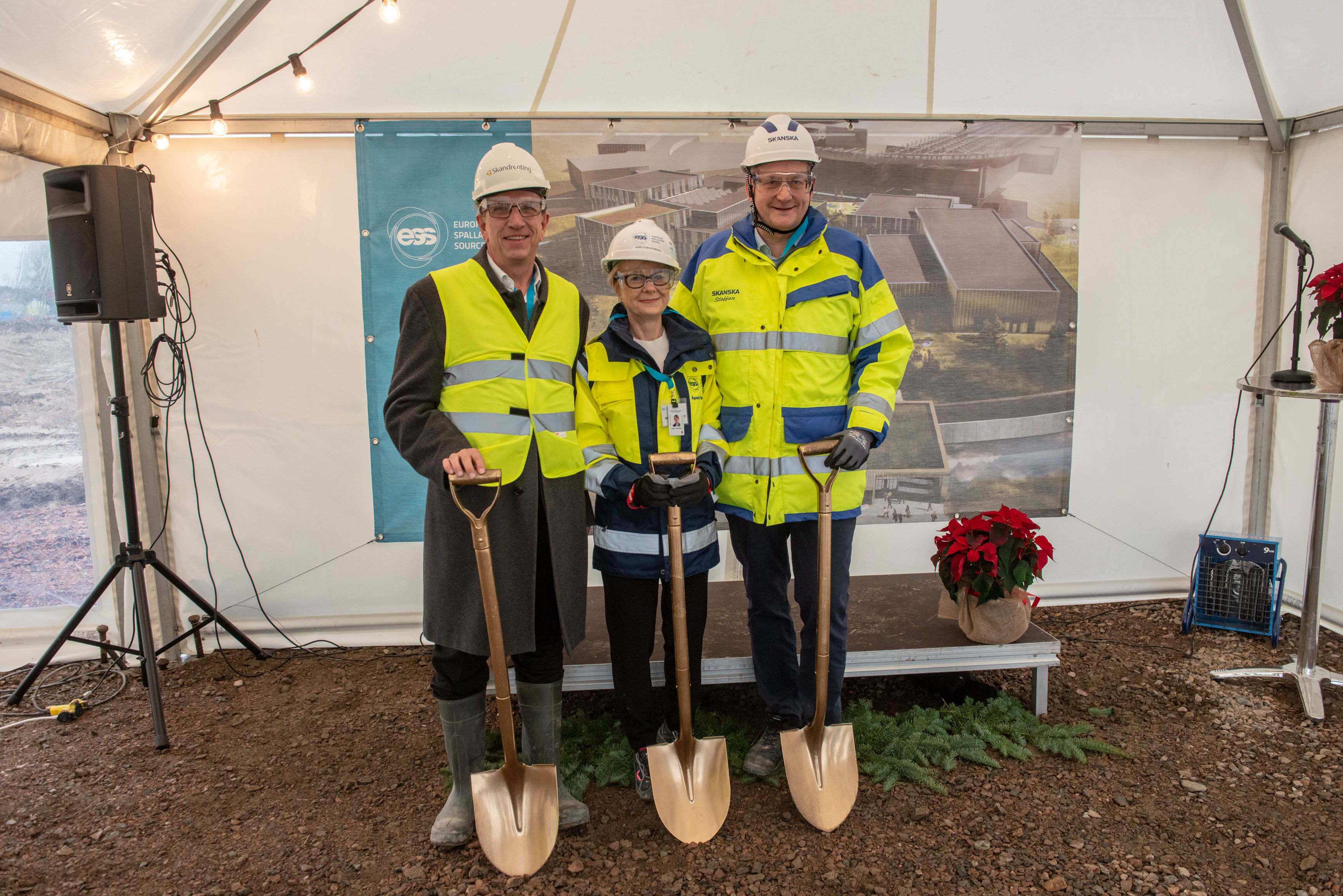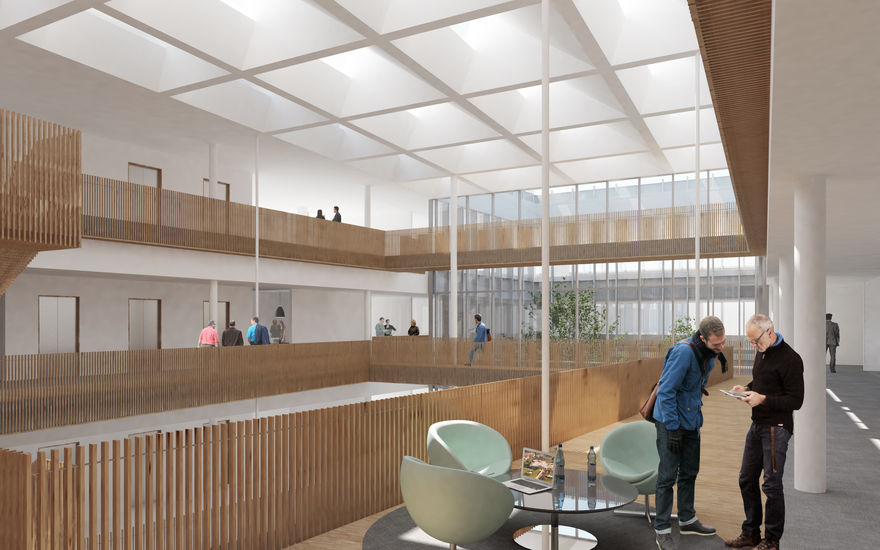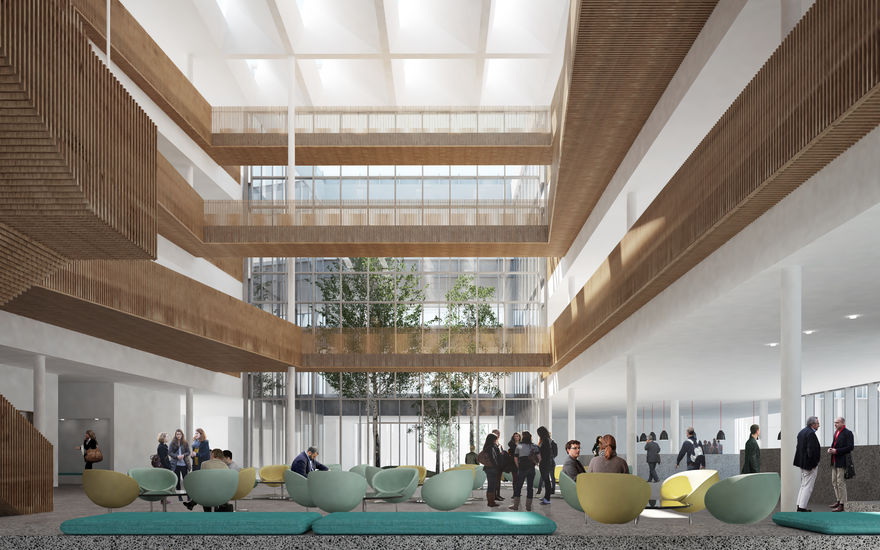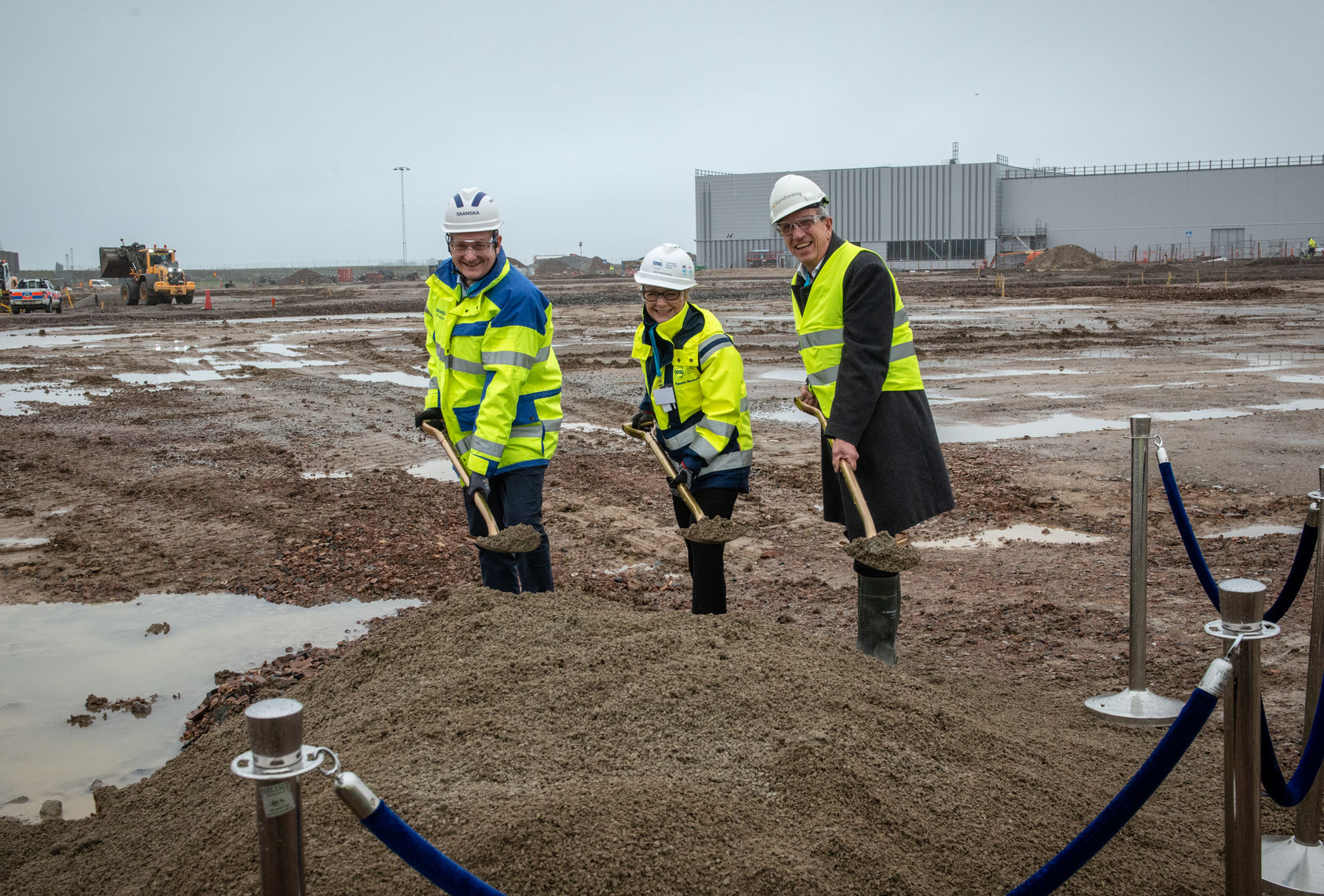
LUND – Today at the European Spallation Source (ESS), a groundbreaking ceremony was held for the ESS Campus buildings, which will accommodate staff and visiting researchers and support operation of the facility. The traditional first shovel of soil was turned by Agneta Nestenborg, Acting Director General ESS, Staffan Andersson, Regional Manager Skanska, and Lennart Björkman, CFO SKR Spallation/Skandrenting.
ESS Campus, sited immediately southwest of the facility’s Target Station, consists of three buildings providing work spaces, laboratories and workshops for staff and visiting researchers. ESS Campus will be a meeting point where researchers from all over the world will gather together with ESS staff to prepare their experiments that will be conducted at the world-leading multi-disciplinary research facility. ESS will enable unprecedented research opportunities within fields such as materials, health, transport and energy, when the facility initiates the user programme for researchers in 2023.
The official groundbreaking ceremony started with celebratory speeches at the construction site. Agneta Nestenborg, Acting Director General ESS, Staffan Andersson, Regional Manager Skanska, and Lennart Björkman, CFO SKR Spallation/Skandrenting subsequently turned the official first shovel of soil with gold-coloured spades, in the presence of a large part of the ESS Council delegates, representing the member countries.
”The start of the construction of the ESS Campus is an important milestone on the road to completion of this unique research infrastructure, that will help to address some of the big societal challenges of our time,” said Agneta Nestenborg, Acting Director General ESS. “The ESS Campus will be the most public part of the site and we have focused on optimising the full experience for staff and visitors.”
Skanska will build the campus on behalf of the Swedish company Skandrenting, which via its fully-owned subsidiary SKR Spallation will lease the completed buildings to ESS. Skanska is, since 2014, the primary contractor for the construction of the research infrastructure. Over the last months ESS and Skanska have worked on the detailed design for the buildings, which have high sustainability goals.
”Our aim is to create a pleasant and stimulating environment at the ESS Campus, to facilitate the scientists’ research and contribute to scientific breakthroughs,” said Karin Svedin, ESS Project Manager Campus. "In collaboration with Skanska, we work on meeting our high standards for the future buildings.”
In total ESS Campus will have a gross floor area of 19,000 m2. The largest building will serve as the meeting point for ESS, with offices, a canteen and an auditorium. The lab- and workshop building contains 16 laboratories and workshops for maintenance, testing and development of equipment for ESS.
The Campus was designed by Henning Larsen Architects, COBE and SLA Architects, in close cooperation with ESS. The buildings are to be completed by the end of 2020, with occupancy expected for the first months of 2021. Until then, ESS staff is accommodated in temporary offices at the ESS site.

























